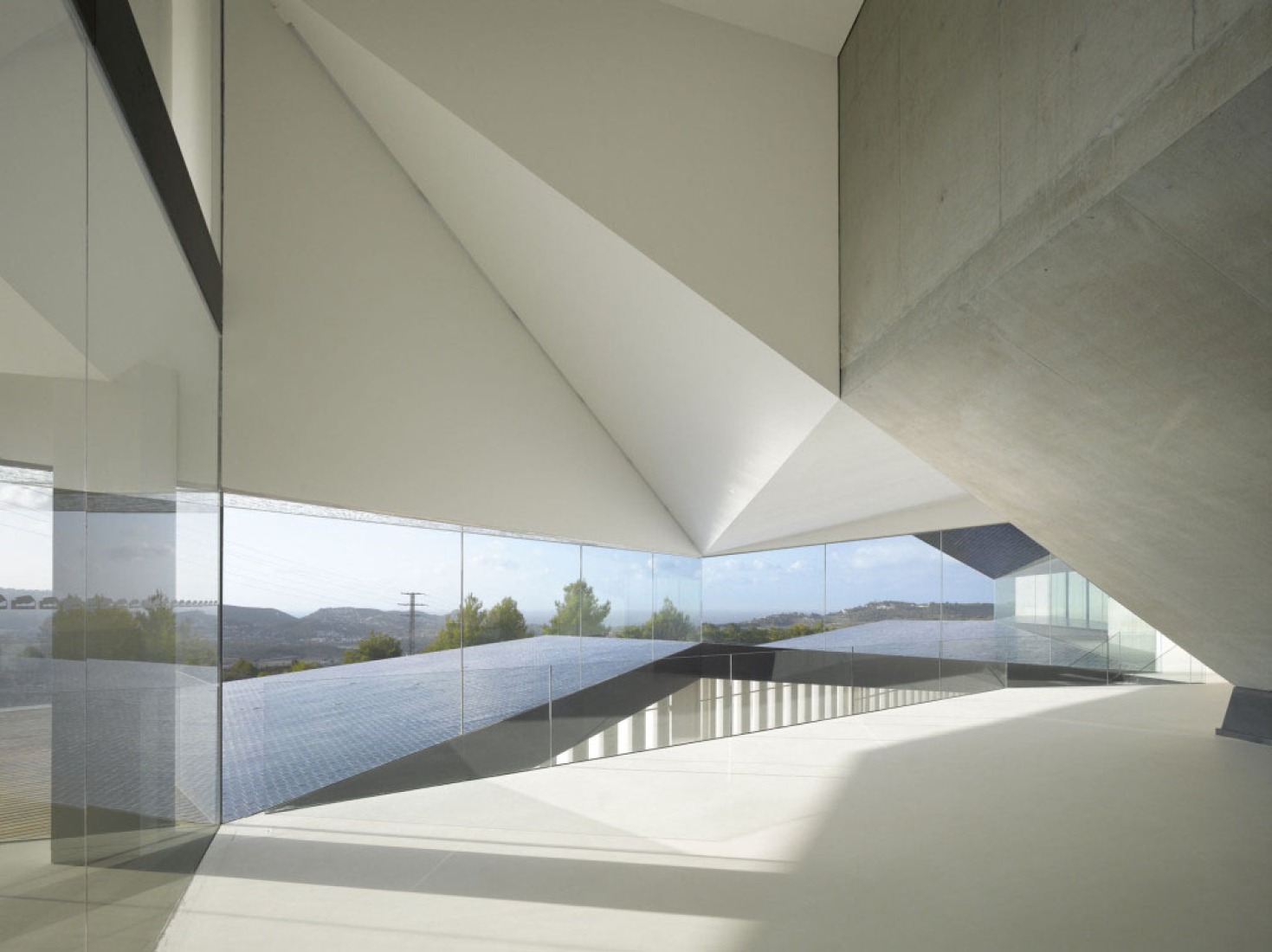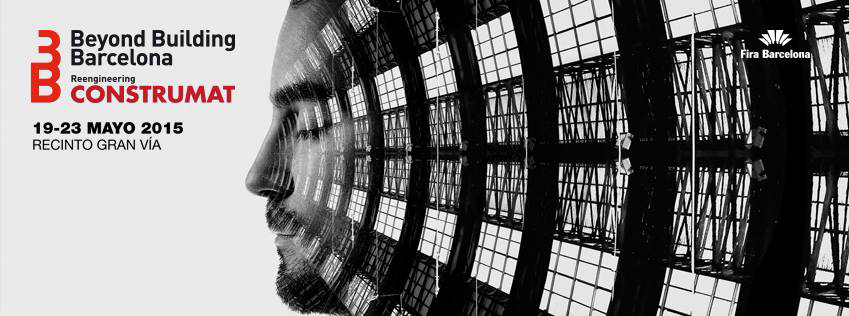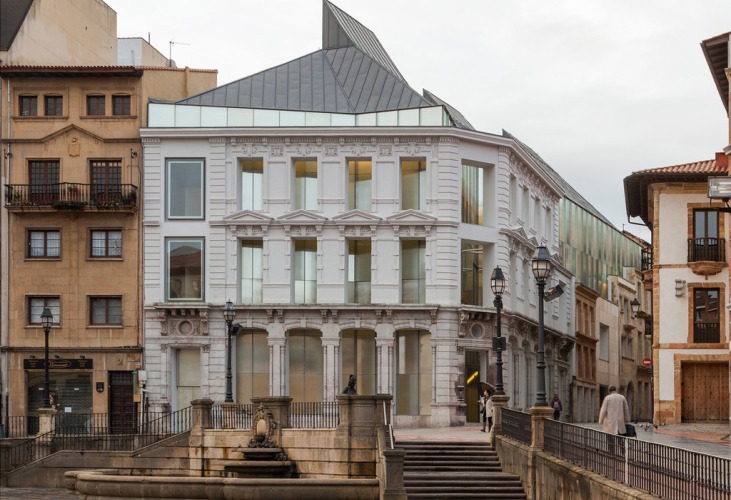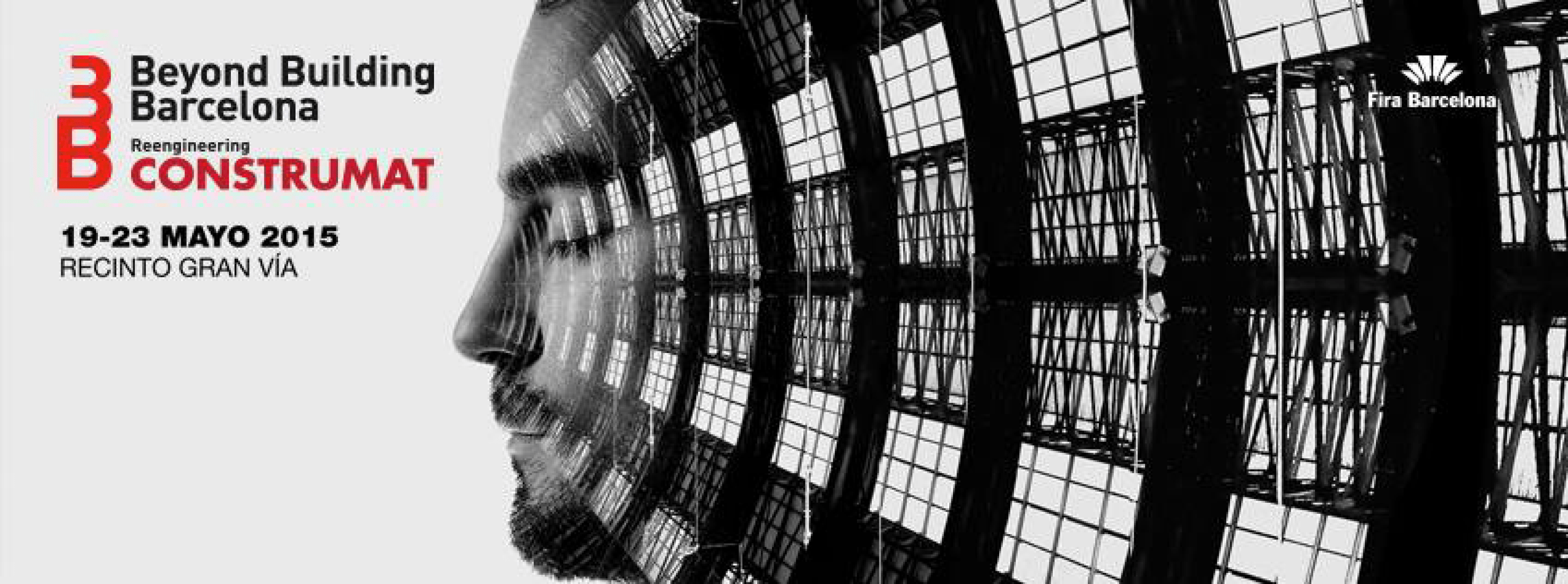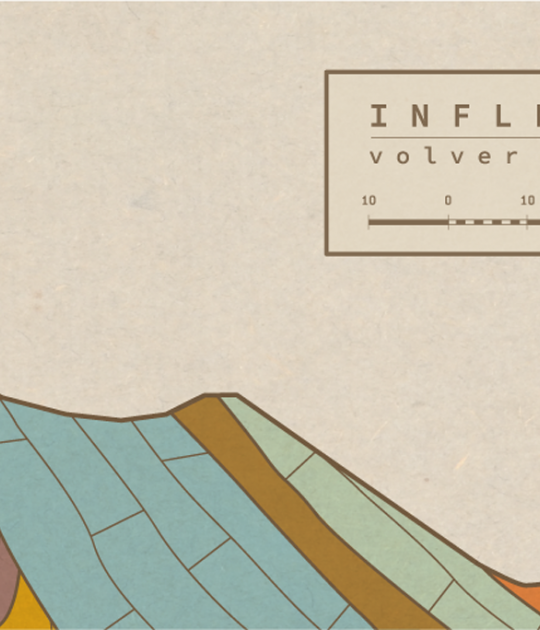Interview by Beyond Building Barcelona CONSTRUMAT
Projects such as the Baluarte (Navarre's Auditorium and Conference Centre), Palencia's Nueva Balastera football stadium, the Archaeological Museum of Vitoria, the Pey Berland plaza in Bordeaux, the Spanish pavilion at the Zaragoza Expo, the Teulada-Moraira Auditorium in Alicante, an office block in Buenos Aires and the Museum of Fine Arts of Asturias have been recognised with national and international awards including the Andrea Palladio, Thiene, Cooper, Achitecti and FAD prizes. In the last few months, the practice headed by one of the most internationally-acclaimed Spanish architects has won the tenders to renovate the Amelies-les-Bains-Palalda thermal baths (France) and to design an industrial/cultural park in Jishou (China).
On more than one occasion you have said that the more challenges a project has the better, as they can almost always be transformed into opportunities. In this respect, what do you think are the most important or the most exciting challenges facing the construction sector in the future?
F.M.- The challenges are no different to the ones we have always had in architecture: to make our cities better; to ensure they help to rebalance society; that they offer a good quality of life and public spaces and services; that the architecture is founded on quality in its configuration and its physical manifestation; that there is a balance between the means and the ends; that is has meaning and is beautiful or attractive; that it represents quality to everyone. All these objectives and more are still very much valid today, particularly in those countries where exponential growth is happening. In terms of its objectives, architecture has not changed as much as we think. The instruments and programmes might have changed, and even the way we objectivize and produce architecture, but I don't believe the basic objectives have changed.
As a result of the crisis, are we seeing a construction sector that is becoming more rational, more consistent, with significantly different hallmarks to what it had a few years ago?
F.M.- Well, I'm not too sure about that. It's true that the crisis has made us think about a lot of things we did in the past, but some people, some architects, were already pointing a critical finger at certain ways of understanding architecture. Their motives were inspired by what they believe should be the principles behind architecture and quality construction. I'm not sure if these reflections are more valid now, with the crisis. People talk about them more. Many opportunists, who have the ability to change the way they think in a matter of seconds, have ‘been converted'. But deep down there is the same lack of conviction with which they would champion the opposite view. It's fashionable now to talk about rational and sustainable use of resources, but this was already a factor in the essence and history of good architectural and building practices. I really hope the crisis has helped to focus attention on matters such as rationality, finding a balance between means and ends, a more gentle beauty based more on the logic of reality and context. But I'm not fully convinced. What is true is that the companies which produce goods and services seem to be more aware of all this, but… How much of this is just a commercial strategy? Quite a lot, I'm afraid.
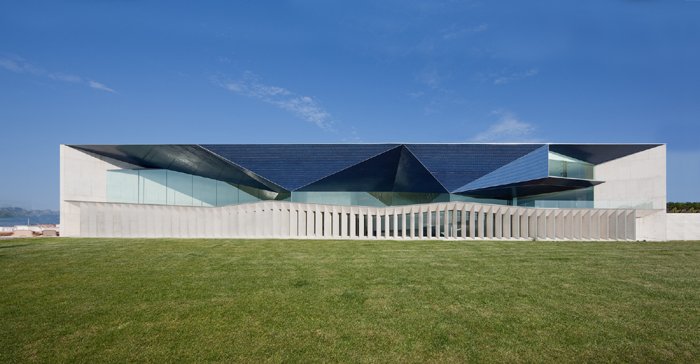
Teulada Auditorium, Teulada-Moraira, Alicante. España. Fotografía © Juan Rodríguez.
Have we learnt anything from our mistakes?
F.M. I really hope so, but as I said before, I have my doubts. But what mistakes are you referring to? To ridiculously lavish architecture at vast expense? This is still going on today and the worst thing is that it is taking place primarily in countries with few resources whose politicians, mostly in dictatorships, continue promoting this kind of architecture for greater personal glory while their people have no decent homes or public spaces. And when we get back to having easy money again, people and public opinion will forget very easily and we'll be back on the same track. History is very cyclical. If we analyse it, you'll see that these fluctuations have being going on continuously across the centuries. The thing is, it's not about trying to analyse things in the short-term or circumstantially but rather in ideological and structural terms. I believe that things will inevitably improve, not so much because of this latest crisis but simply because history, in the long term, shows that we tend to improve. And architecture and the construction industry, in their fair share, form part of this future. But if we're thinking in terms of the consequences of this particular crisis, I don't believe we've learnt a great deal, though I wish we had. And I'm not a pessimist, by the way, it's just that I don't want to be naïve.
For many years you have lectured at educational institutions in Spain and in other countries, such as Switzerland and the United States. How do you rate the education these future professionals are receiving, both here and abroad? Are there any significant differences between the Spanish and American educational models, for example?
F.M. Of course there are significant differences, not so much with European or Swiss schools, both of which are based on polytechnic criteria, but there are huge differences between the Spanish and North American systems. Generally speaking, Spanish architects, at least those who emerge from certain schools, the ones that regulate qualifications, are very well trained when we compare them to the rest of the world. The essential differences between the education of Spanish and American architects, I believe, lies in the huge technical component that our syllabuses still include. Unfortunately this is now changing and this will mean the end of a standard of quality that is unarguable today. The courses for American architects, at least those at Harvard, Yale and Cornell, where I've taught, have a more speculative component, more distanced from reality, in a society where they assume that anything is possible as long as you have enough money. Our students know how to convert the reality of a particular context or the physical determinants of architecture into an asset, something that spurs them into creating and configuring great architecture. Which of these systems is better? Everything has arguments for and against. Everything is assessable. Personally, I like the combination of teaching both in Spain and abroad because apart from the fact that it's very enriching in terms of teaching quality, I can also give my students, wherever they are, a balanced viewpoint of two different approaches and possibilities which, at the very least, seems the most sensible course to adopt.
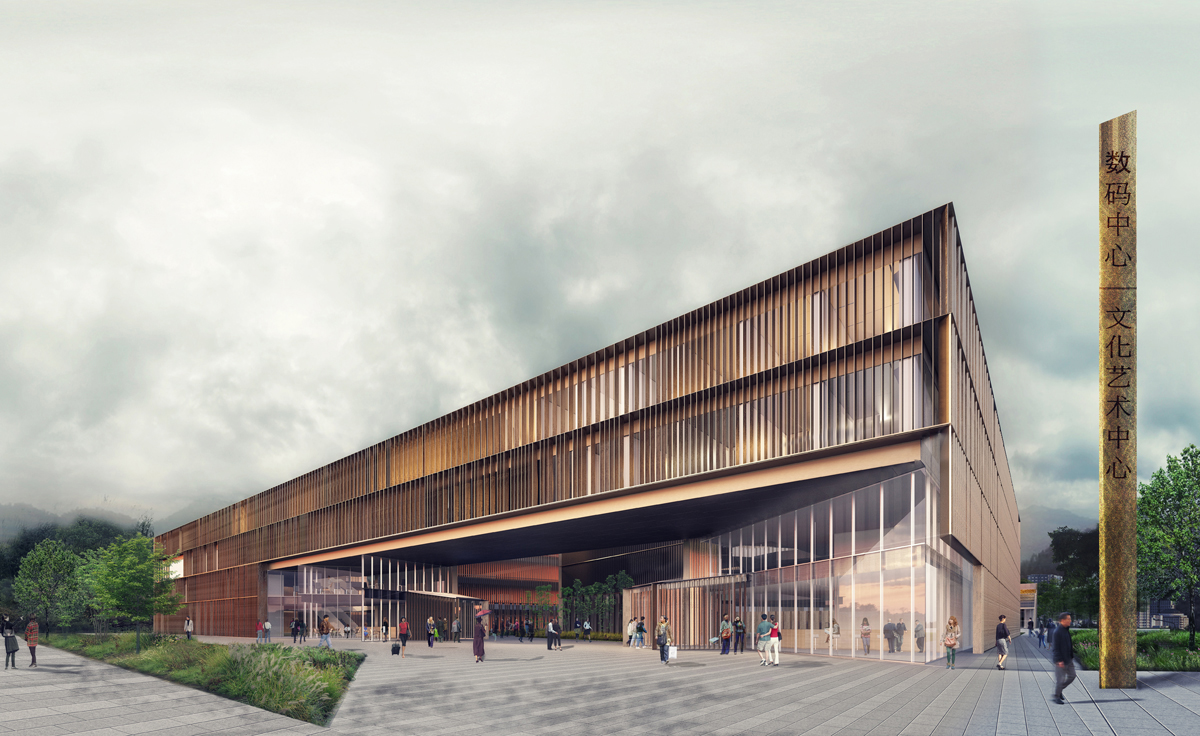
Cultural Industrial Park in China by Francisco Mangado. Image © courtesy of Francisco Mangado.
The Beyond Building Barcelona-Construmat trade show has been completely revamped for this event with the aim of becoming a much more proactive show, a type of agora and meeting place based around four major cornerstones: building renovation, sustainability, innovation and design…
F.M.- I'm really looking forward to seeing this edition of Construmat. At first sight, I think the idea of revamping the rather static model that perhaps characterized previous editions of the show is fantastic and I'm really curious to see how it all turns out.
How important do you think these four cornerstones are? In the case of innovation, for example, smart materials, 3D printing, BIM technology… it seems they are really taking hold in a big way. What might be the impact of these new processes?
F.M. I'm not completely convinced that they will have a great deal of influence on the fundaments of architecture, which are more concerned with ideological concepts, with context, with culture… There's no doubt that they make up a productive context, and an administrative one, and that they have a greater influence on processes. But not on the fundaments, much as this might disappoint some people. Architecture has a rationale and a history; a content that, fortunately, makes it more dependent on thinking than on resources. Although naturally the latter are also important.
In the field of design, is the organization or response of the interiors of housing, offices, workplaces, retail spaces and public facilities the most suitable for present-day society? Or to put it another way: are we managing to address the new types of family units, working systems, shopping habits, etc.?
F.M.- Unfortunately we're living at a time when, even though this might seem paradoxical given the huge needs of certain countries and the outcries about certain unnecessary operations, people are still creating architecture that is more concerned about the outward appearance, the epidermis; prioritizing the way things look instead of what they are. Things being as they are, concern for interior space is fundamental. In every evolution experienced by architecture, the spatial concept and its materialization have been fundamental, the subject of considered thought. That's not happening now. People either have a purely decorative vision, not a spatial one, or they don't even give it any thought at all. Look at how few architects work on the partitioning of buildings now. In magazines you very rarely see this, and most of the images published only show the outer appearance, and even then only in two dimensions.
I honestly believe there is an impoverishment of interior spaces as a subject for research and serious ideas. Obviously there are some fantastic exceptions out there. But I'm not sure there is any kind of overall concern. And how can you possibly produce great architecture if you're not aware of the opportunities entailed in making active decisions about it? You can't look at a project as a whole without considering it. Perhaps this is also the result of a fragmented vision of architecture which, to a large extent, has been conditioned by the means of producing and representing the drawings which are then poorly used to lead on to this fragmented vision.
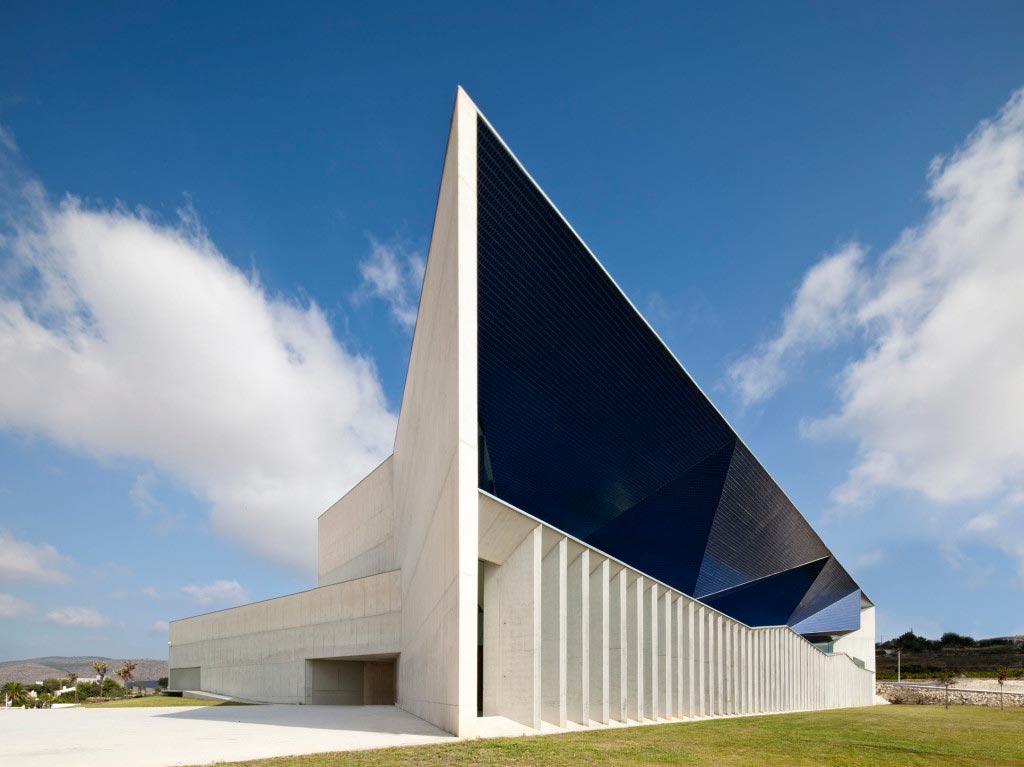
Teulada Auditorium, Teulada-Moraira, Alicante. España. Fotografía © Juan Rodríguez.
Should building renovation be the main cornerstone of the future of construction, of architecture?
F.M.- I wouldn't go that far. But there is no doubt that a concern for recycling architectural resources is absolutely essential, in both qualitative and quantitative terms. And when I talk about renovation I'm not just referring to historical quarters of cities but to everything that has been built, even in the last few years, which can be reused. Let's think about the coast, for example. Do we really need any more hotels or is it a matter of adapting or even demolishing some of those that are already there, improving their architectural, functional and environmental quality? Adapting or eliminating is also a form of architecture. Architecture is not always synonymous with building.
Finally, the four cornerstones are closely related but the link between sustainability and building renovation is particularly significant. Do you think the actions being taken in these two fields are being done properly? What is your experience in this respect?
F.M.-Personally I don't have any experience in this field, but there is no doubt that reutilizing, transforming or cleaning up are some of the most reliable ways of tackling the issue of sustainability, a concept which these days is often devoid of meaning or manipulated.
In 2008 you were responsible for the creation of the Architecture and Society Foundation. Looking back, how do you see the projects and initiatives undertaken thus far and what is the outlook for the future?
F.M.-The overall view couldn't be more positive, but I don't think I'm the right person for this task. A foundation, and this is something I've learnt first-hand, is not exactly synonymous with immediacy. The original ideas have to be complemented with some kind of contrast. This requires a period of development, time, a process of trial and error. Right now, the progress of all the programmes is consolidated. In the next few years we're very interested in delving further into the question of ‘Society' in our programmes. For example, this year we started another programme, also on a two-year basis, run in this case by sociologists and economists. This course is going to focus on ‘The City and Senior Citizens.' The role of architects in this case will be more than just presenting and gathering ideas to develop questions. The role will be more active, but from the audience's perspective.
Your professional projects, your teaching activities and your conferences have allowed you to address the reality of the construction industry and architecture in such diverse cultures as China, India and North America. Are there significant differences? What strengths would you single out from each of them?
F.M.- Of course there are differences. We're talking about deep-rooted contexts and differences. Indeed, one of the big problems of our architecture is the ‘distribution' of identical architectural models left, right and centre regardless of the specifics. This is a corporate and overly business-like type of architecture that is hugely successful in market terms but is tremendously banal. It's just poor. The alternative is ‘signature' architecture which is sometimes as repugnant as the former. What's happened to good architecture, a service comprising intelligence and sensitivity? Where is the beauty in content? My choice would be all those young architects I've seen in different countries who, from their modest perspective, with few resources and sometimes completely isolated, are rising up against this pathetic model. I'm with them and their ideals and their strength. That's what I'd single out.
In many respects the configuration of our cities depends on urban planning. Where do you think future trends are heading in this field?
F.M.- What a question! To be honest, I've no idea. I'd just like to ask people to use more intelligence in defining the challenges and more sensitivity and honesty in resolving them

